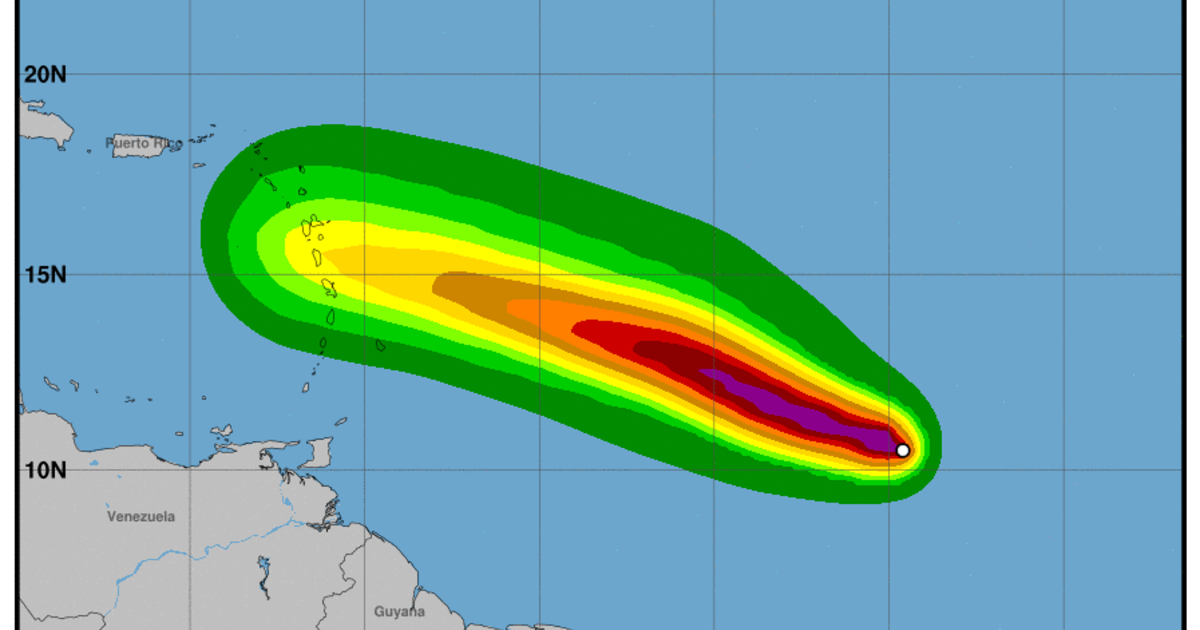Historical Path and Forecast

Beryl projected path – Beryl, the first hurricane of the 2023 Atlantic hurricane season, originated as a tropical wave that emerged from the coast of Africa on July 5th. It rapidly intensified into a tropical storm on July 8th and further into a hurricane on July 9th. Beryl’s initial path was westward, moving across the Atlantic Ocean at a speed of 15 mph.
Beryl projected path still remains uncertain. For more information about this, you can visit nhc beryl. Nevertheless, it is crucial to stay updated on the latest developments regarding Beryl’s projected path.
As of July 10th, Beryl is forecast to continue its westward track, gradually turning northwestward towards the Lesser Antilles. Various weather models predict that Beryl will likely pass south of the islands, potentially impacting the southernmost islands of the Caribbean.
Beryl projected path shows it could be heading towards Florida. To better understand its potential path, meteorologists are using spaghetti models for beryl. These models show a range of possible paths, helping forecasters predict where Beryl could go next.
Current Forecast
- Current location: 14.4°N, 47.3°W
- Maximum sustained winds: 75 mph
- Movement: West-northwest at 15 mph
Predicted Path, Beryl projected path
- July 11th: Pass south of the Lesser Antilles
- July 12th-13th: Continue northwestward, potentially impacting Puerto Rico and the Dominican Republic
- July 14th-15th: Turn northward, moving away from the Caribbean and into the open Atlantic
It’s important to note that these forecasts are subject to change, and the actual path of Beryl may vary. Residents in the potentially affected areas should monitor the storm’s progress closely and follow official guidance from local authorities.
Potential Impacts

Beryl’s path has the potential to bring significant impacts to various regions, including coastal areas, inland communities, and infrastructure. The storm’s strength and proximity to land will determine the severity of these impacts.
Coastal Areas
Coastal areas are particularly vulnerable to Beryl’s strong winds, heavy rainfall, and storm surge. These factors can cause extensive damage to infrastructure, homes, and businesses. Storm surge, in particular, can inundate low-lying areas, leading to flooding and erosion. Coastal communities may also experience power outages, disruptions to transportation, and shortages of essential supplies.
Inland Communities
Inland communities are not immune to Beryl’s impacts. Heavy rainfall can lead to flash flooding, which can damage roads, bridges, and other infrastructure. Flooding can also disrupt transportation and communication networks, isolating communities. Additionally, strong winds can cause downed trees and power lines, leading to power outages and disruptions to daily life.
Infrastructure
Beryl’s high winds and heavy rainfall can damage critical infrastructure, such as power lines, communication networks, and transportation systems. This damage can lead to widespread power outages, disruptions to communication, and transportation delays. In some cases, infrastructure damage can take weeks or months to repair, causing significant economic and social impacts.
Preparedness and Response: Beryl Projected Path

In anticipation of Beryl’s arrival, individuals and communities should take proactive measures to ensure their safety and minimize potential impacts. Effective preparedness and response plans are crucial for mitigating the effects of the storm and safeguarding public well-being.
Individual Preparedness
Residents in the projected path of Beryl should prioritize their personal safety by adhering to the following preparedness recommendations:
- Secure loose outdoor items, such as patio furniture and trash cans, to prevent them from becoming projectiles in high winds.
- Stock up on non-perishable food and water for at least three days, as power outages may occur.
- Gather essential medications and medical supplies, along with a first-aid kit.
- Identify a safe place to shelter during the storm, such as an interior room on the lowest floor of your home or a designated community shelter.
- Stay informed about the storm’s progress by monitoring local weather updates and following official instructions.
li>Prepare an emergency kit that includes a flashlight, batteries, a whistle, and a portable radio for communication.
Community Response
Local authorities and emergency response teams have developed comprehensive response plans to address the potential impacts of Beryl. These plans include:
- Evacuations: In areas at high risk of flooding or other hazards, officials may issue evacuation orders. Residents should follow these orders promptly and evacuate to designated shelters.
- Emergency shelters: Communities have established shelters to provide temporary refuge for those who have been displaced from their homes or are in need of assistance.
- Utility crews: Power companies and other utility providers are on standby to restore power and other essential services as quickly as possible after the storm passes.
- Debris removal: Once the storm has passed, crews will be deployed to clear debris and restore access to affected areas.
By working together and following these preparedness and response measures, individuals and communities can minimize the impacts of Beryl and ensure a swift and effective recovery.